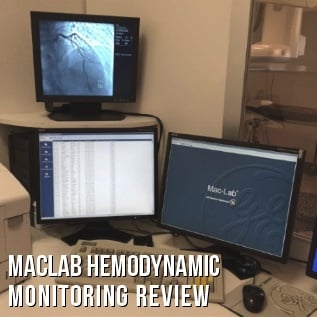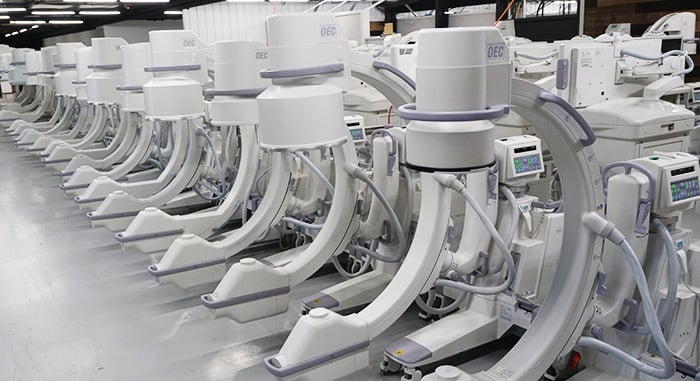
We often get asked the question, “What is the most popular hemodynamic monitoring unit you sell?” The answer is easy: the GE MacLab.
Over and over, buyers choose to pair their cath and angio labs with the MacLab for their monitoring needs and our service engineers and partners in the field praise the experiences they have with them. There are a number of reasons why this is the case, and in the next few paragraphs we'll share them with you.
User Experience
GE employs a tried-and-true user interface that has long been considered the best in the industry among users and service personnel alike. This is mostly due to the ease of using the MacLab. The menus are intuitive and easy to navigate, and setting up preferences is simple. Other manufacturers have developed their own interfaces, and these continue to improve, but GE MacLab currently leads the way in user experience.
Features
The Maclab offers a wide array of options, including a stout selection of standard features. Here are just a few of them and the benefits they provide, according to GE:
Multi-path documentation: Streamlined documentation and reporting workflow helps you document your case with fewer interruptions and still meet your documentation requirements.
User-defined Macros: Simplify documentation, speed system configuration, and help ensure accuracy.
ST Segment Window: Helps clinicians visualize ST segment changes during procedures to enhance clinical confidence.
Many optional additions are also available. Here are just a few:
EtCO2 Module Support: Support Joint COmmision recommendations for documentation for conscious sedation with mainstream and side-stream EtCO2 data.
Holter Window: Facilitate retrospective documentation with visual reference of up to five minutes of ECG.
True Integrated FFR: FFR data may help clinicians determine the hemodynamic severity of vascular lesions with a quantitative measure of the impact of a stenosis.
Should electrophysiology be part of your speciality, the GE MacLab and the CardioLab can be combined into one computer called the ComboLab to eliminate the need to switch between workstations.
Serviceability
The ability to service your equipment when problems arise is key. GE is known for making systems that can be serviced with relative ease and have strong parts availability, and the MacLab is no different.
Unlike most hemodynamic monitoring systems, there are third-party service providers for the MacLab. Other manufacturers tend to lock down their systems, requiring proprietary software in order to access the service modules. This limits the available service options and you'll most likely be forced to pay OEM rates (generally the highest) in order to get your system back up and running.
Service Costs
As mentioned above, there are third-party service options for the GE Maclab, which helps keep service costs reasonable. Costs for a year of coverage average in the $7,000-$11,000 range for the MacLab. On the flip side, we’ve seen OEM service agreements for other units that come in as high as $35,000 a year!
Compatibility
As an added bonus, since the GE MacLab runs apart from the cath lab itself, it can be installed with any cath lab: GE, Philips, Siemens, Toshiba- it doesn’t matter. If you choose a lab from another OEM, don’t be surprised if they try to sell you their own hemodynamic monitoring system on the grounds of compatibility. If the MacLab is your unit of choice, however, you can stick with it.
The Takeaway
While we know that popularity isn't everything, and that there are other OEMs doing a good job with hemodynamic monitoring, GE is, and has been for some time, leading the way with the MacLab. If a new cath lab is in your near future, pairing it with a GE MacLab for your hemodynamic monitoring is well worth consideration. If you'd like to know more and get a quote, you can use the button below to tell us about your project and how we can help make it happen.

Kenn Dextrom
Kenn Dextrom is the Director of Product Manager at Block Imaging. He aims to provide clear direction and careful planning for Interventional Cath Lab buyers and working with the Block Imaging product team to provide excellent solutions for our customers. Out of the office, he spends most of his time keeping up with his wife and their three energetic sons.






